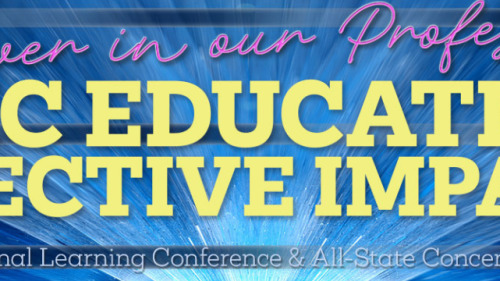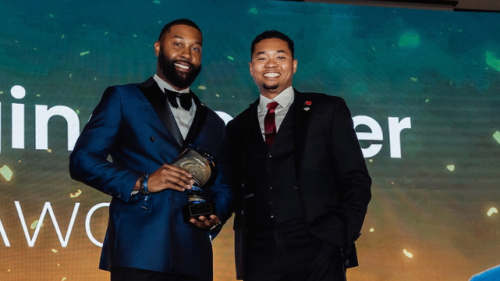With a projected 10-year job growth rate of over 20 percent,1 the field of user experience (UX) design is exploding right now, and a graduate-level UX degree can help you get into the fast lane of this ever-expanding career track. If you’re forward thinking, curious about UX design trends and someone who thrives in a fast-paced and dynamic environment, you just might have what it takes to be a successful UX designer—at least according to Ben Woods, a UXD professional with nearly two decades of experience and a faculty member at Kent State University.
“What I liked about working professionally as a UX practitioner is that, for me, no two days were generally exactly alike. There were always new challenges to solve and new challenges to work on, says Professor Woods. “There’s a lot of not just doing the technical work of being a UX person but also doing the consultative work of working with an organization and working with people to get to where they need to go.”
To help potential students of the Kent State online Master of Science in User Experience Design better understand what could lie ahead for them in a UX design career, Professor Woods offers some thoughts and insight into the life of a UX designer, as well as the trends currently driving the industry.
Getting People Where They Need to Go
Aligning business goals with user goals is the sweet spot where UX design really starts to have an impact on the bottom line. For a UX designer, “getting people where they need to go” has a dual meaning: As a designer, your job is to get your firm to a successful product launch by getting your user to a successful interaction with your software or service. Projects fail when users are unhappy, so thinking long and hard about user experience design isn’t just a piece of the puzzle, it’s absolutely crucial. User interface typically accounts for half to two-thirds of a software project’s total code, almost half of the development effort, and accounts for almost all of unforeseen fixes required right before and right after a product launch, and 70 percent of product launches fail due to lack of user acceptance.2
But even though UX design is a technical field, Professor Woods emphasizes the human-centered nature of successful design and the “soft skills” necessary to thrive as a UX designer. “A lot of times, the technology is a little bit too far ahead for what people want to use or are able to use, so we have to start thinking about the human element,” he advises. “Engineers and inventors and such, they think about the technology that can make something happen, not necessarily how the user will interact with it.”
Building Empathy
For Professor Woods, understanding how users think and work and acquire skills isn’t just a platitude, it’s at the center of successful design. “I think most people know what empathy means, which is different than sympathy. It really means [to] put ourselves in the place of our users, not just imagine ourselves in the place of our users, but actually go where they work. And this is where I think it’s important to know what research methodologies are available to us to build that empathy. Things like interviewing users, ethnographic studies, doing site visits to see how people are actually working.”
A Case Study in Human-centered Design
A thoughtful UX professional can bridge the gap between users who want to solve a problem in their lives and business leaders who want to help them get there. Professor Woods offered a brief anecdote from his own career to highlight how this can be done and why it’s important.
“The example I give a lot of times is, I worked in a corporate environment,” Professor Woods describes. “We were developing a new portal for our distributors. And we worked in a very nice, modern building, a very clean, very white-collar place. And we were challenged to really imagine ourselves, how are we going to design a portal that’s going to work for these distributors?”
The key to this process, for Professor Woods, was a very hands-on experience in user research. “I had the opportunity to go and visit one of these distributors, to see how they’re actually working,” he continues. “The sales guy I was talking to, I think he was probably getting calls every five minutes from his customers. People were coming in asking questions, looking for things. I looked at his desk, and above his desk, he had a bookshelf with paper catalogs from us as well as our competitors. And that was illuminating.
“There’s no way you can know that your customer prefers to use catalogs to using your website because they’re easier to navigate than your website. There’s no way to know he’s getting a call every five minutes. Users won’t tell you that. What’s important to UX professionals is to build that empathy by doing that kind of research, by going out into the field and seeing how people live and how they actually work. Not just imagine it, but actually go and see how the work gets done.”
Designing Interfaces for the Next 20 Years
UX designers spend a lot of time thinking about how contemporary users access information and functionality in their digital products, but they also have to be nimble enough to imagine how it will be done in the future.
“For the last 20 years, we talked about user experience largely as a visual medium. So people are used to looking at websites, software, mobile apps, etc. And the good thing about these experiences is that there are visual signifiers that let people know what a system can do.” But now, Professor Woods argues, new product designs and functionalities are challenging user expectations in significant ways. “If you have an Amazon Echo, and you put it on your mantle, there’s really no indicator of what it is able to do,” he notes, “and so that’s one of the big challenges with a lot of these systems is people don’t really know what the system can or cannot do. Virtual reality and augmented reality, people often talk about them in the same conversation…the challenge there, too, is how do you interact with information objects?”
Preparation for the Future
UX sits at a crossroads between what is technologically possible and what users can understand, learn or intuit. Technological advances like voice interaction and virtual reality change the way people interact with information, and more and more tasks and even entire jobs are being automated. Part of being a human-centered designer is understanding that as our digital world changes, so too must our understanding of how people relate to the products and interfaces that constitute it.
For Professor Woods, this means distinguishing between innovating for the sake of it and innovating for the sake of serving a need. “Not all technology, not all technological innovations are good,” he warns, “they just aren’t. Imagine 18 or 19 years ago. Everybody had a VHS machine, right? Imagine you’re a company and you optimize for a particular feature: to make the fastest rewinding VHS ever. And so you focused on optimizing that one little feature. But imagine you announce it, and the very next week, what comes out? The DVD player.”
The tension between what has always worked and what will come next animates UX designers. In order to meet the challenges of a shifting landscape, Professor Woods advocates for creating device-agnostic experiences, such as web-native apps, that meet users where they’re at without relying on specific operating systems or devices that may or may not stand the test of time. “It’s kind of fundamental. If you want to make these technologies available and accessible to people with basically no training, you have to make interfaces that are very quick and easy to acquire.”
Is a Master’s Degree Really Better Than a Bootcamp?
Meeting the challenges of the future doesn’t just require intuition, it requires training. There are many options to refine your skills in UX design, ranging in commitment from online bootcamps to more involved degree programs.
“The difference between a bootcamp and a master’s degree is, I think a master’s degree is generally more comprehensive,” Professor Woods advises. “Workshops and bootcamps are fine for learning a discrete skill in in a limited amount of time, but it’s really tough to become a real expert in an area in the space of a couple weeks or a couple days. In a master’s program, you really are steeped in the concerns and the philosophy and the principles of user experience and you learn a lot more because you actually live it over a longer period of time. The other key value is it’s an accredited degree.”
Staying Focused on People
The field of user experience design encompasses a great deal of both technicality and technology—everything from usability studies to product design to HR to corporate strategy—and a comprehensive understanding of the field takes time and focus. And that brings us back to the center of all good UXD: the user.
“Despite all the talk about technology and emerging technology and emerging trends, much of our curriculum at Kent State is not really about technology. It’s really about understanding people. And so that’s why much of our curriculum focuses on how to interview people, how to recruit users, how to create usability studies that help designers to actually know whether an experience is working for people.”





